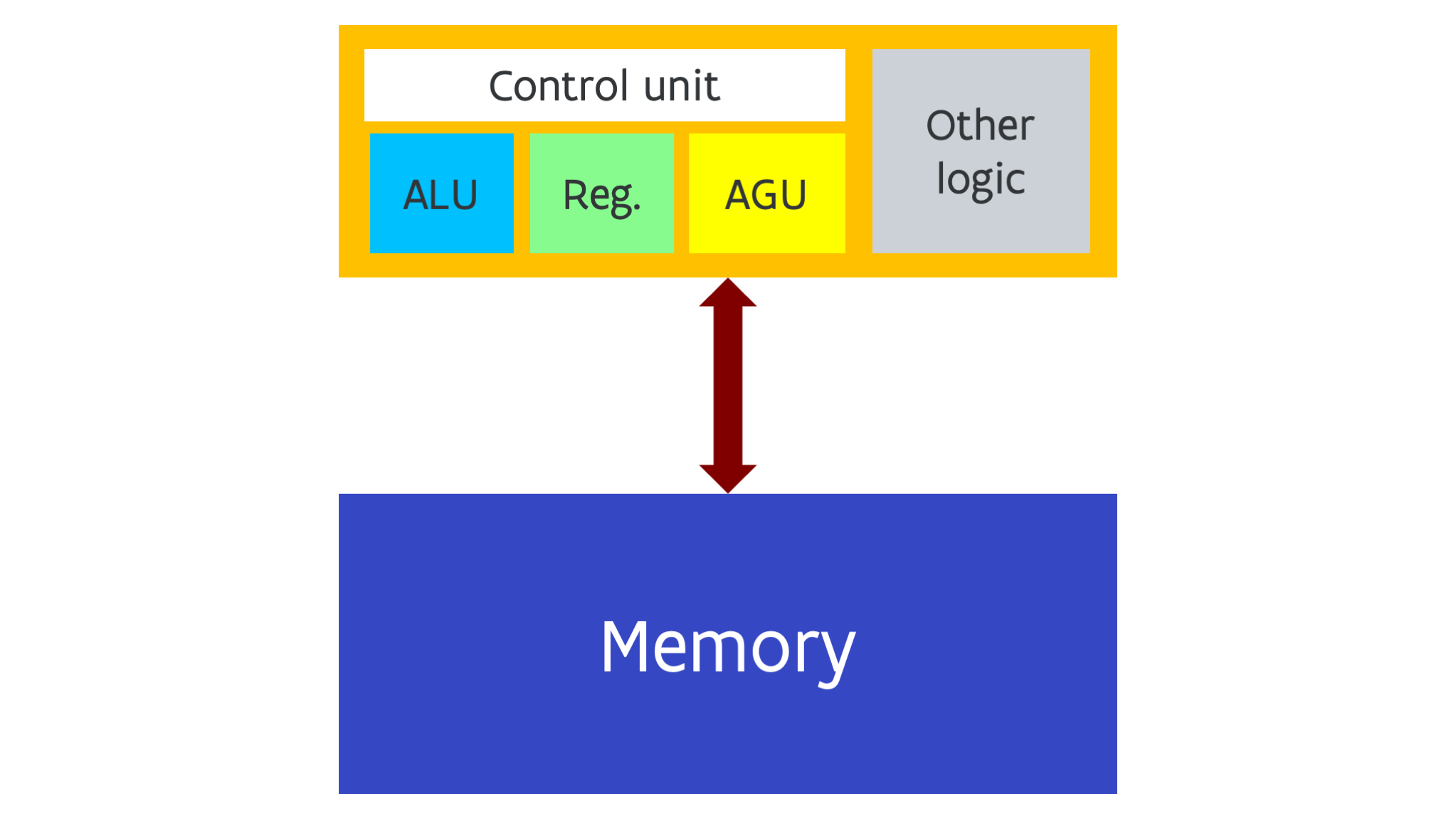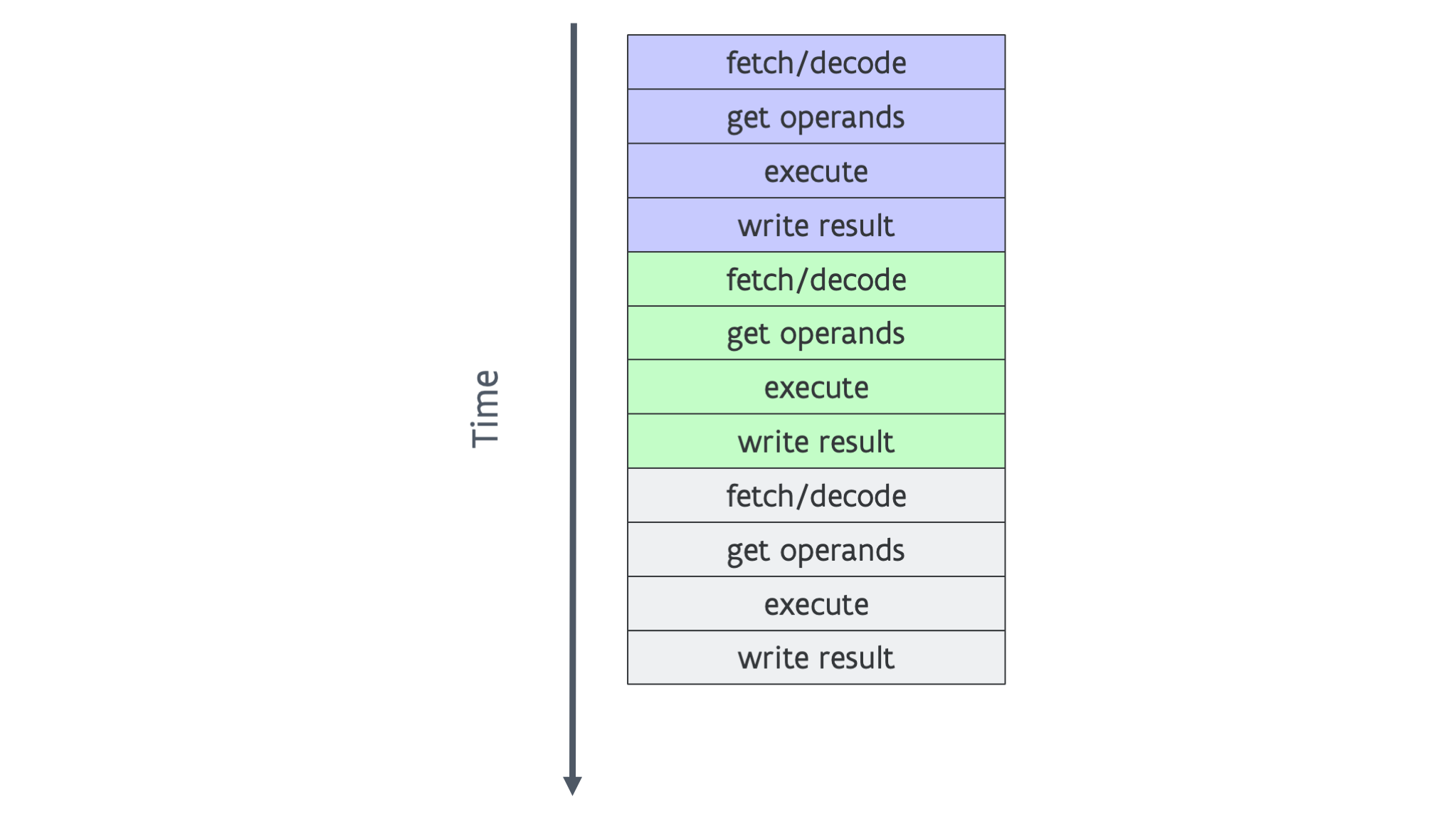A very basic CPU¶
Let us start with a look at a very basic computer. It has two important components. The processor executes simple instructions, e.g., adding two numbers. The memory stores the data in a linear structure. A clock governs the pace at which instructions are processed.

Currently a processor is just as single chip, or in fact, just a small part of a chip, but this was very different in the early days of computers based on chips. Fast processors often consisted of multiple chips, and sometimes even thousands of them.
Note
The Cray 1, a supercomputer from 1976, had a processor built out of 20,000 chips. The memory was built out of 73,278 chips. The mean time between failure was 50 hours, so whenever you bought such a machine you got a lot of spare parts with it and on-site technicians to replace the parts.
Let us now open up our simple processor and have a look inside.

It has several building blocks. The ALU or Arithmetic and Logical Unit is the unit that does the actual computations. The registers are a very small block of local memory. On modern computers, the ALU can only use data that is already in one of the registers and will also write results to the registers. 30 years ago or more this was not always the case and some processors could operate directly on data from memory. Another important block is the Address Generation Unit with load/store unit and and the memory controller. This is the connection between the main memory and the registers. All data passes through the load/store unit with the AGU generating the actual address. The control unit is the part that coordinates all the work.
In our very simple processor, instructions are executed one after another. But executing each instruction itself consists of multiple steps. Consider, e.g., this oversimplified execution pattern distinguishing a few important steps for executing an instruction in the ALU:

Instructions are fetched from memory and decoded in the first step. In the second step, the operands of the instruction (the numbers on which it works) are transported from the registers to the ALU. In the next step the actual instruction is executed, e.g., two numbers are added. And in the last step the result is stored back in a register. Instructions involving storage would also consist out of multiple steps. The steps are synchronised with a clock. So in this simple example executing an instruction would take 4 clock ticks, so we could also say that we do 0.25 instructions per clock.
Note however that different steps use different parts of the logic in the processor, and this is the key to improving performance.
Note
In the past there were computers that worked with data straight from memory without registers. Current Intel CPUs still have for compatibility reasons with the older generation chips instructions that get data from memory and in the same instruction also use it for an arithmetic or logic operation, but in modern implementations these instructions are broken up in the hardware into an instruction that transfers between main memory and memory in the register space, and a second instruction that does the arithmetic or logic operation. So the above picture with instructions that work on data in registers and instructions that transfer data between registers and main memory, is accurate enough to understand the basics of modern computing.